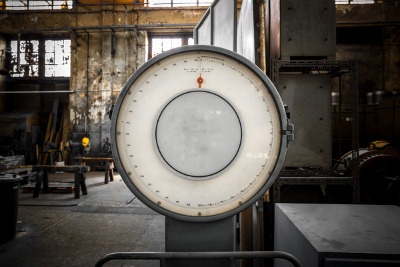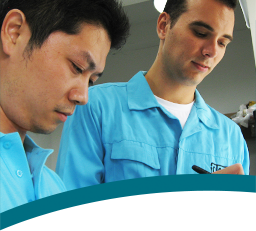These are important questions because product quality hinges on accuracy of production and quality control measures. We know that many manufacturers rely on quality control inspections to assess product quality and order status at various stages of production.
Product inspectors set off every day with their inspection kit containing a variety of tools that are required to perform a proper inspection (see 6 Essential Tools for Product Inspection).
But sometimes there are certain necessary tools that the inspectors cannot bring with them, which factories are required to provide. Of course, each QC inspection will require different sets of tools depending on the product.
"Each QC inspection will require different sets of tools depending on the product."
But because factories are expected to perform their own quality control as well, they will generally have the following tools on-hand:
1. Hi-pot Testers
Hi-pot (or high potential) is a word used to describe the electrical safety testing instruments we use to monitor the electrical current that flows through the insulation of a product. A hi-pot test verifies that the insulation of your product or component is sufficient to protect consumers from electrical shock. The test will show us the product’s safety under normal conditions by whether or not a deliberate over-application of test voltage causes the insulation to break down.
2. Scales
Whether you’re verifying jewelry or car tires, product weight is generally a common check to be performed during product inspection. Factories generally provide scales suitable for weighing not only the product itself, but its packaging and shipping carton as well. During an inspection of a shipping container, the scale for weighing the container is also typically made available on-site.
performed during product inspection. Factories generally provide scales suitable for weighing not only the product itself, but its packaging and shipping carton as well. During an inspection of a shipping container, the scale for weighing the container is also typically made available on-site.
Product inspectors are typically given weight measurement specifications and tolerances which are checked to ensure the correct dimensions, number of products per carton, etc.
3. Power converters
You may be manufacturing an electrical appliance for multiple markets wherein different electrical plugs are commonly used. For example, a television that will be sold in the UK market will require a different plug type than one sold in the US market (see Product Certification During Inspection?). The factory will need to provide a power plug converter to allow inspectors to carry out product testing. This is especially true if the product is being manufactured in a country that uses a different type of power plug than that in which the product will be sold.
4. Level
A level – sometimes called a bubble level or spirit level – is an instrument used to indicate whether horizontal or vertical surfaces are flat. The level is placed on the surface and the reading on the bubble tube is noted. If the level is accurate, it will indicate the same orientation when rotated and measured on a horizontal plane. A difference implies that the level is inaccurate.
Levels are often used during product inspections of furniture and wood molding. A level is a tool that helps find any inconsistencies in wood caused by warping or substandard workmanship. Most factories that manufacture these and other product types should be able to make a level available to inspectors.
5. Multi-meter
Multi-meters are designed to measure electric current, voltage and usually resistance, typically over several ranges of value. A multi-meter can either be a basic hand held instrument or a highly accurate bench instrument and will troubleshoot any kind of electrical issue.
Conclusion
There are all kinds of different tools that are required to inspect your products – some that are supplied by the inspector and others the factories are required to have on-site. Testing is an essential component of product inspections to verify safety, functionality and quality. Making sure that, between your factory and your inspection team, the necessary equipment is available goes a long way in getting accurate results.






